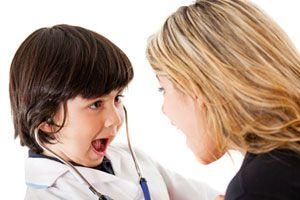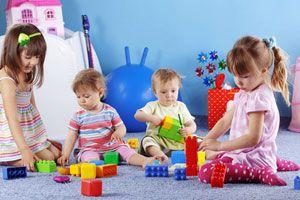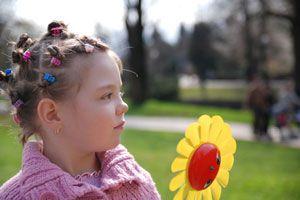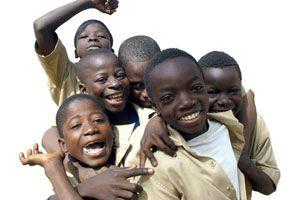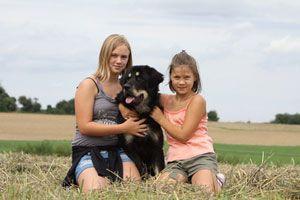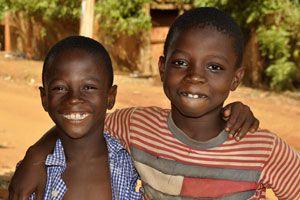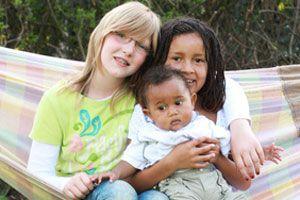Preventive Check-Ups
General Information
WHAT ARE PREVENTIVE CARE EXAMS?
Each child has the lawful right for preventive care exams at different age (“U-Untersuchung”), called the U1 – U9 and J1. Additionally the national association of pediatrician in Germany recommends the U10, U11 and J2 exams. With each preventive care exam the emotional, social, mental and physical status of the child is evaluated in order to recognize differences from the norm as early as possible. All “U” examinations are compulsory.
WHAT DO I LOOK FOR?
The visits are an integrated physical examination, which means that I am looking if your child’s development is in accordance with the norm for the child’s age.
WHAT IS THE YELLOW BOOK?
The pediatrician is documenting the results of the exam in this book. The parents are obliged to keep the book as a lawful proof that the preventive care exams have been done.
WHICH PARAMETERS ARE ALWAYS MEASSURED?
In each visit weight, height and head circumference are documented.
U1
WHEN?
Shortly after birth.
WHAT IS IMPORTANT?
The adaptation of the newborn after birth is documented using the APGAR scores at 1, 5 and 10 min. Here, the heart rate, breathing, skin color, muscle tone and baby’s reaction is evaluated. A complete physical exam is done to evaluate for congenital anomalies.
The first dose of vitamin K is given.
U2
WHEN?
Between the 3rd and 10th day of life.
WHAT IS IMPORTANT?
A complete exam is done with emphasis on the primitive reflexes and the joint mobility in particular it is important to recognize congenital anomalies and any kind of birth trauma.
- The second dose of vitamin K is given.
- The newborn blood screening is done.
- Start of Vitamin D prophylaxes on day 6th of life.
- First hip ultrasound to rule out congenital hip anomalies is done.
- Kidney ultrasound after day 5th of life to rule out anomalies is done.
- Hear screening.
U3
WHEN?
Between the 4th and 6th week of life.
WHAT IS IMPORTANT?
At this point in particular the reflexes are examined and the neurological evaluation is in the center of attention. A normal pattern of feeding schedule, stool and urine frequency are important. Normal weight gain is controlled and is a sign of a healthy development at this age.
- Second hip ultrasound to rule out congenital hip anomalies is done.
- Kidney ultrasound to rule out anomalies will be done if not done at U2.
- Hear screening if not done at U2.
U4
WHEN?
Between the 3rd and 4th month of life.
WHAT IS IMPORTANT?
The development of the “social contact” such is laughing and proper eye contact is achieved. The progress in motor development such as lifting and holding the head for a few seconds when lying prone is present. Proper reaction and turning to loud noises. Following an object behind the midline.
U5
WHEN?
Between the 6th and 7th month of life.
WHAT IS IMPORTANT?
The evaluation of language, gross motor and fine motor skills are at the center of the exam. The child starts attempting to sit at around five months of age and should be able to sit independent at this age for a few seconds, be able to support the body when leaning forward with the palms, roll over from prone to back and start trying to roll from back to prone. The infant should be able to grasp for objects and put them in its mouth; “hand to mouth exploration phase”. The baby language is present.
U6
WHEN?
Between the 10th and 12th month of life.
WHAT IS IMPORTANT?
- Gross motor skills: He/she is able to crawl, sit secure and independently, pull itself up on chairs and furnitures and move along holding on them. By 12 months the infant is be able to make the first free steps.
- Fine motor skills: Can use the pincer grip with thumb and index finger. He/she Is able to put an object in a bin and take it out.
- Language and understanding: First words such as Mom and Dad. Will be able to follow simple commands; such as “come here” or give me”.
- Social interaction: Likes to play “Peek-a-boo”. Estranger anxiety can be present strongly around this age.
U7
WHEN?
Between the 21st and 24th month of life.
WHAT IS IMPORTANT?
- Gross motor skills: Can go up-stairs holding on one hand, can make a step backwards. Is able to bend forward and pick something up from the floor.
- Fine motor skills: Builds a tower of three to four, scribbles on a piece of paper, is able to use a spoon, drink from a straw and wash hands. It can open boxes and drawers.
- Language and understanding: Knows at least 100 vocabularies and is able to formulate two to three words sentences. The child is able to express what it wants: “I want cookies.” Is able to show her/his nose, mouth, ears, eyes and etc. if asked to.
- Social interaction: Curious to explore it’s surrounding. Likes to be together with other kids and is able to wait its turn in games. Looks for reassurance from parents. Is able to show his anger when it does not like something. Likes to look at the pages of books.
U7a
WHEN?
Between the 34th and 36th month of life.
WHAT IS IMPORTANT?
At the center of this visit lies the early detection of
- vision problems,
- behavior issues,
- dental anomalies,
- language delays,
- overweight and
- growth retardation including spine anomalies.
U8
WHEN?
Between the 46th and 48th month of life.
WHAT IS IMPORTANT?
- Gross motor skills: Is able to go up and down stairs without problems and stay on one leg. Can catch a bouncing ball.
- Fine motor skills: Can draw a figure with arms and legs, a circle and a face. It is able to build a tower of seven to nine, use a scissors and put a big puzzle of 4 to 12 pieces together. Can undress cloth pieces which are easy to wear.
- Language and understanding: The language is 100 percent understandable to estrangers. It is able to follow two to three commands at once, e.g.” go and bring me the ball”. Knows where it lives. Is able to recognize some colors and can cname them.
- Social interaction: Prefers to play with other kids than alone and has its first friendships. Understands to deal; “I give you this if you give me that”. Likes to tell the history of a certain event, which happened to him during the day.
U9
WHEN?
Between the 60th and 64th month of life.
WHAT IS IMPORTANT?
- Gross motor skills: He/she can run jump and balance on one leg with closed eyes.
- Fine motor skills: He/she is able to copy a triangle and use a knife for cutting food.
- Language and understanding: The grammar of the language is almost without mistakes. Sentences with more than 5 words and knowledge of more than 2000 words are normal. Can count to ten and knows almost all the usual colors.
- Social interaction: Has friends. Is able to tell imaginary histories such as the “journey to the moon”. Can accept a different opinion and apologize for a wrong behavior. Is curious and asks the question “why”.
U10
WHEN?
Between the 7th and 8th year of life.
WHAT IS IMPORTANT?
This is about recognizing behavioral issues such as ADHS, development delays such as dyslexia, overweight and motor developmental delays.
- Hear screening and vision test
- Blood pressure control
U11
WHEN?
Between the 9th and 10th year of life.
WHAT IS IMPORTANT?
This is about recognizing behavioral issues such as ADHS, development delays such as dyslexia, overweight and motor developmental delays.
- Hear screening and vision test
- Blood pressure control
J1
WHEN?
Between the 13th and 15th year of life.
WHAT IS IMPORTANT?
During this visit the child is checked for growth anomalies, overweight, dental anomalies, thyroid anomalies, immunization status and school problems. Safe sexual behavior is discussed.
- Blood pressure control.
J2
WHEN?
Between the 17th and 18th year of life.
WHAT IS IMPORTANT?
During this visit the child is checked for growth anomalies, overweight, dental anomalies, thyroid anomalies, immunization status and school problems. Save sexual behavior is discussed.
- Blood pressure control.



